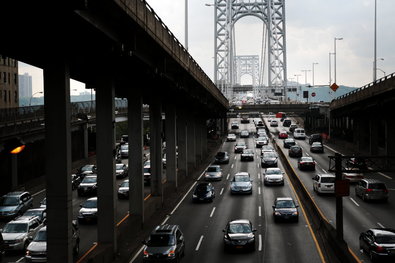
Bridges, Broadband, Water Mains — What to Fix First?
This week, many Americans will hit the road to spend time with family and friends. And when they get to their destinations, they’ll be thankful for electricity, running water and high-speed Internet service. But all of these systems in the United States are overburden by use, inattention, congestion and lack of funding. Which requires most urgent care: roads, bridges, power grids or something else altogether? And what’s the best way to finance it?
* hit the road = 먼 길을 나서다, 여행 길에 오르다/ get to ~ = ~에 도착하다, 닿다; [어떤 결과]에 이르다/ running water = 유수, 수돗물/ overburden = 과중한 부담을 주다/ inattention = 부주의/ congestion = 혼잡/ power grid = 전력망/ finance = 자금[재원]을 대다
 길, 다리, 전력망 그 외 어떤 것이 가장 긴급한 치료가 필요하며, 그 재원을 대는 최선의 방법은 무엇인가요?
길, 다리, 전력망 그 외 어떤 것이 가장 긴급한 치료가 필요하며, 그 재원을 대는 최선의 방법은 무엇인가요?
1. Let States Finance and Maintain Roads and Bridges
In the individual states, where infrastructure problems are more immediate and practical needed action can and has been taken in a timely manner.
2. Ways to Address the Aging and Neglected Water Systems
Rialto, Calif. and Bayonne, N.J. are representative of a new movement in American water infrastructure investment.
3. Charge Drivers a ‘Fee for Service’ Toll
The best idea is a toll that depends on the road conditions and especially on congestion: The 3 a.m. driver pays little; the 5 p.m. driver pays more.
4. Don’t Forget About High-Speed Broadband
The U.S. needs to encourage, not limit, broadband infrastructure, making it easier, faster and more cost effective for all citizens to connect.
5. The Electric Power Grid Needs America’s Attention
A siloed view of the power system must give way to an understanding of interdependencies among the power sector and other critical services.
Sample Essay
Don’t Forget About High-Speed Broadband
More than 80 percent of American adults use the Internet, a number that will continue to increase alongside consumer demand for broadband-enabled devices and applications. Given this trend, the U.S. should expand its current definition of physical infrastructure beyond local and national water mains, electrical grids, roads, bridges and highways to include high-speed broadband. And, it’s imperative that broadband is widely available to every citizen, regardless of who they are and where they live.
However, treating high speed broadband as infrastructure is complicated.
Several years ago, the Federal Communications Commission recommended including easier access to poles, conduits, ducts, rights of way, “dig once” legislation and the placement of communications infrastructure on federal lands — all vital to more effective coordination between the public and private sectors. Congress recently introduced bipartisan legislation to facilitate alignment between federal agencies and private network providers to include the installation of pipes carrying fiber-optic cables as part of federally funded highway construction projects.
Generally, the private sector has been critical in scaling and sustaining broadband networks, making government incentives only part of the solution. Regulatory certainty is of equal importance as industry works toward adequate returns on their investments. Despite years of fluid investment in broadband infrastructure, some economists argue that the F.C.C.’s recent reclassification of broadband Internet as a Title II service, will see a corollary decline in the building and enhancing of networks, despite increased government incentives.
President Obama has outlined aggressive goals for wireless infrastructure, prompting immediate actions to alleviate the current strains on this platform. Yet, without sound legislation and public policies that incentivize the continued development of robust broadband and the repurposing of federal spectrum from government to commercial uses, wireless infrastructure will not evolve into a more sustainable and reliable asset.
Going forward, we must support policies and investments that encourage, not limit, broadband infrastructure investments. Our nation builds roads and highways to make it easier for citizens to reach their destinations without limited interruptions and costs. The same goals should be applied to broadband to make it easier, faster, and more cost effective for all citizens to connect.





![]() 길, 다리, 전력망 그 외 어떤 것이 가장 긴급한 치료가 필요하며, 그 재원을 대는 최선의 방법은 무엇인가요?
길, 다리, 전력망 그 외 어떤 것이 가장 긴급한 치료가 필요하며, 그 재원을 대는 최선의 방법은 무엇인가요?






